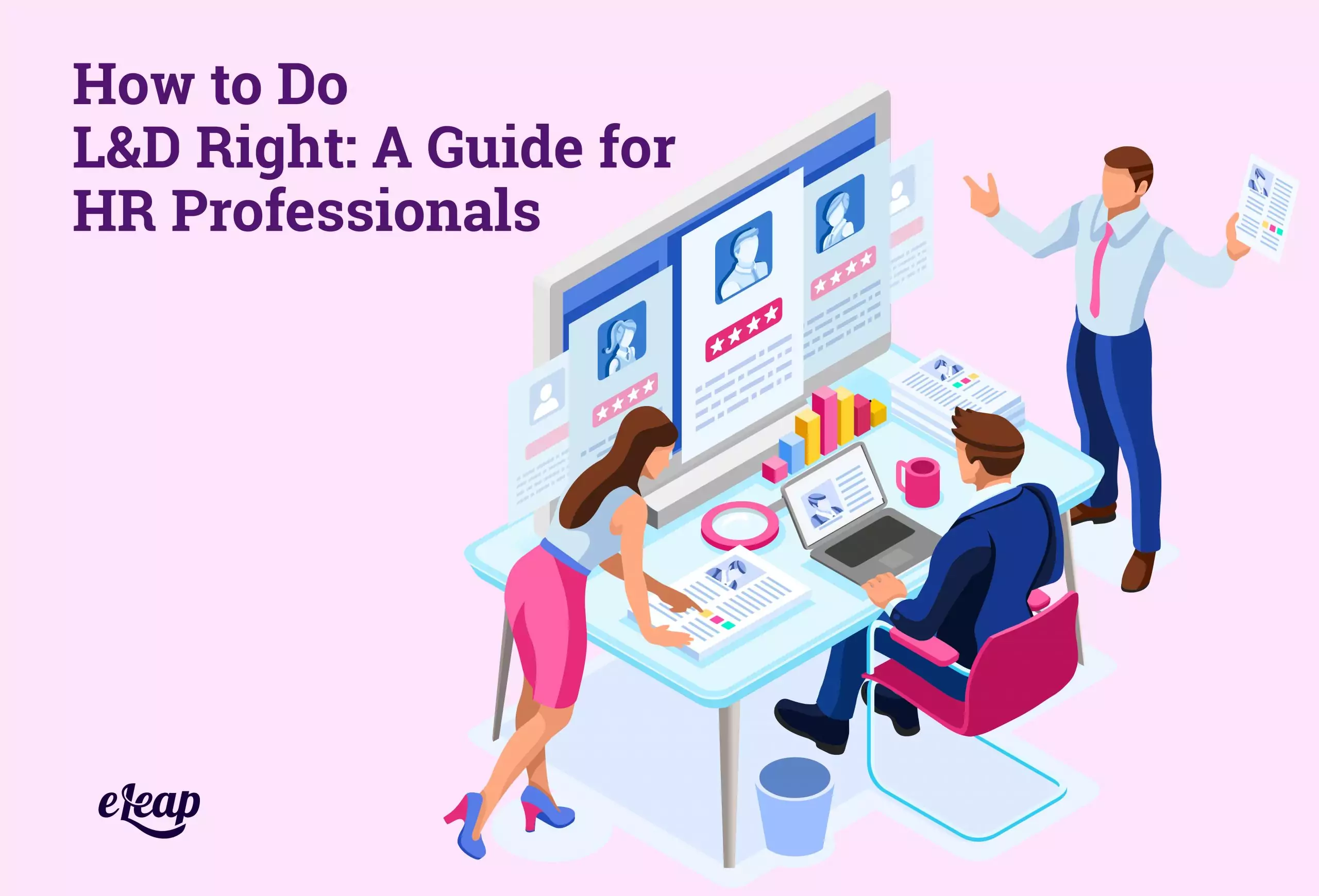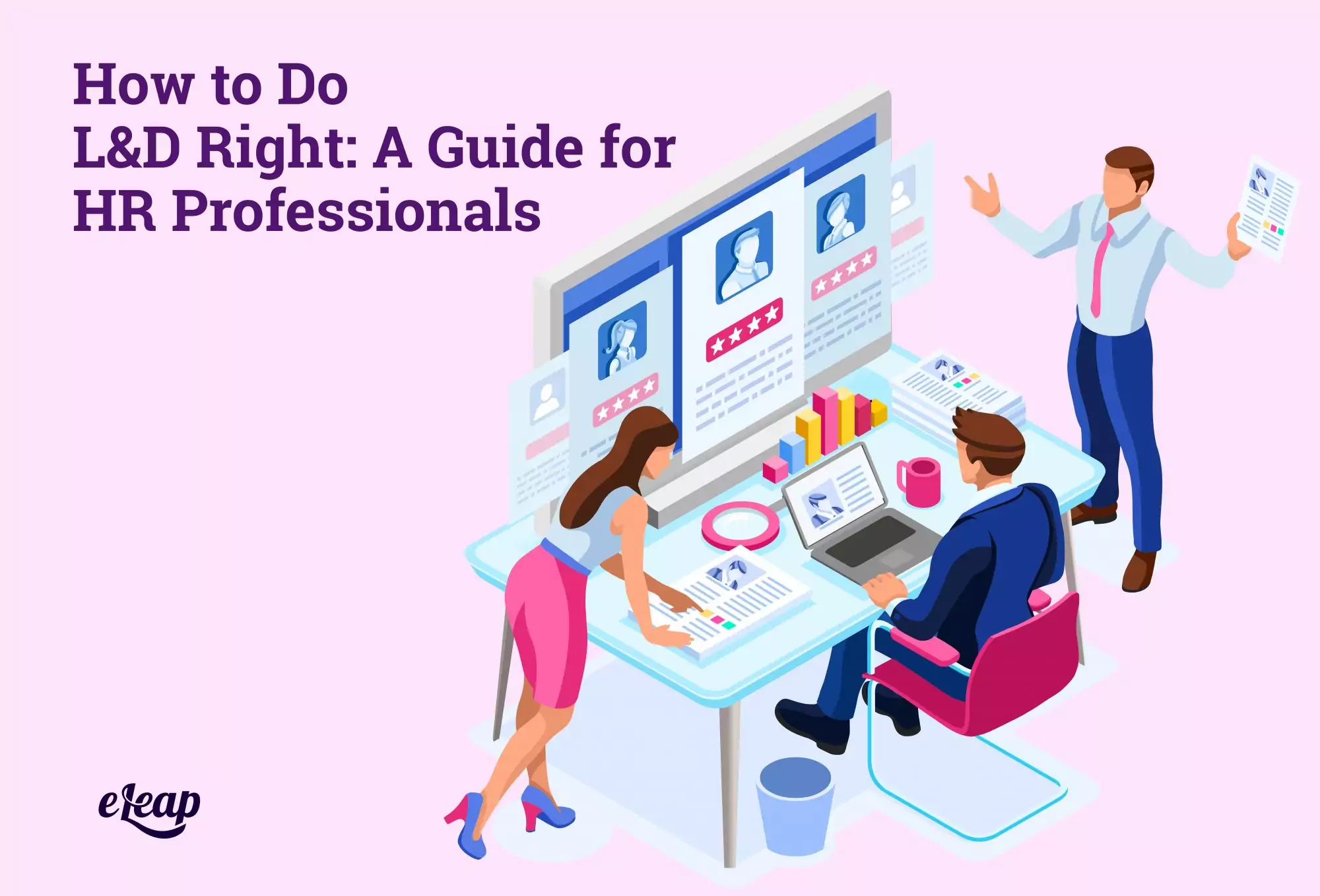How to Do L&D Right: A Guide for HR Professionals

Few initiatives are as central to business success as L&D. It’s a critical part of boosting morale and engagement, closing skills gaps, and developing your workforce. However, it’s also easy to get it wrong. This guide for HR professionals attempts to layout ideas L&D can take to improve their learning and development projects.
Given the high stakes involved, it is important to ensure that your organization is getting learning and development right. What does that mean? What steps should you take?

L&D Is More Than Mandatory Corporate Training
Too often, learning and development is relegated to the backburner. Execs see it as a nice-to-have initiative once mandatory corporate training has been handled. However, that’s not the case. It’s vital at all times and there is so much more to it than diversity training or sexual harassment prevention.
Why is it important? It plays a critical role in a broad range of vital focuses within the organization, including:
- Retaining top talent
- Reducing the incidence and cost of turnover
- Scaling growth
- Improving customer satisfaction
- Closing skills gaps
- Increasing your ability to compete
- Creating a positive corporate culture
Given just how important learning and development is, you can see it’s essential to get it right. How do you do that, though?
L&D Alignment with Business Strategy
The first step is to make sure that you’re able to align your L&D initiatives with your business strategy. For instance, suppose digital transformation is an important business strategy. Most organizations today have some digital transformation plan. L&D can be used to help ensure that your people have the skills to handle that transformation, reducing your reliance on third parties and simultaneously improving the skills available to you within the workplace.
Sadly, most companies fail when it comes to aligning L&D with business strategies. To be successful here, you’ll need to take a hard look at what employee capabilities matter most right now, those required for near-future success, and those that will be required well down the road. Based on that, you can connect your L&D efforts with business strategy.
Who Owns L&D?
An important consideration when it comes to getting L&D right is accurate ownership. Who owns your L&D efforts? For many businesses, it’s HR. That’s good, but not quite where you should be. L&D professionals should be guided by organizational goals. Without an alignment of L&D goals with overall organizationals goals, it is hard to get support from leadership.
Yes, HR should be largely responsible for learning and development. After all, these are the people that will be creating content, tracking learner progress, certifying training, and more. However, other stakeholders also have an important role to play here. In fact, it’s important that business units and HR co-own L&D.
We live in a fast-paced world where change can occur in the blink of an eye. Without support from both HR and business units, it can become impossible to deal with that change in terms of training and development. For instance, staff members might require immediate training on new technologies being used, or they could require additional training to comply with new industry rules or government regulations.
By ensuring that both HR and business units have a stake in L&D efforts, it becomes possible for those efforts to change and evolve as necessary, informed and led by both sides. The result is an improved ability to keep up with changes as they occur, which can enable an improved ability to compete, the ability to use new technology and other tools, and better customer satisfaction in the end.
Where Are Your Weak Points?
Building on the last tip, it’s also important that HR and business unit leaders can pinpoint your organization’s weak points. These capability gaps (or skills gaps, if you prefer) represent areas where competitors may outperform you, or where you may fall short of meeting customer expectations.
Of course, those weak points do not necessarily have the same value. It’s important to not only know what they are, but their estimated value to the organization, and when that value might change. For example, cloud-based tool knowledge might be a missing component within one team. That could have a serious impact right now (high value). On the other hand, you could be missing creative talent on your marketing team. However, because you’re able to outsource graphic design to another company, the impact is not particularly damaging (low value).
By understanding where your capability gaps lie and their value both now and down the road, it becomes possible to create a cohesive plan to close them. Again, this will require ownership from both HR and business units to successfully create a robust strategy that will guide your efforts forward.
What’s the Journey Like?
If you’re not familiar with the term “learner journey”, it’s time to learn more about it. One of the most critical considerations when it comes to getting L&D right is to have learner journeys in place. So, what are they?
Honestly, they’re nothing more than plans for getting employees from where they are now to where they want or need to be. There are plenty of stops along the way, though, and creating accurate learner journeys will require that you have a solid understanding of:
- The needs of the employee’s team or department
- The future requirements of the team/department/business
- Strengths of the employee
- Employee’s personal and career goals
All of these factors should be considered when mapping out the learner journey. Those journeys also need to include the right components to support learner success. Not only should those include classroom days (whether in-person or virtual), but it’s important to have follow-up lessons and even support from other employees, either through user forums or mentorship-like relationships.
Get It Right
There’s a lot that goes into a successful L&D initiative. We’ve touched on several of the more critical considerations above, but there are many others. In addition to this guide for HR professionals, the right technology must also be in place. A modern, cloud-based learning management system delivers the flexibility, customization, and ease of use necessary to get it right. Contact us at eLeaP to learn more about our platform and how we can help you develop a strong, business-aligned L&D initiative.